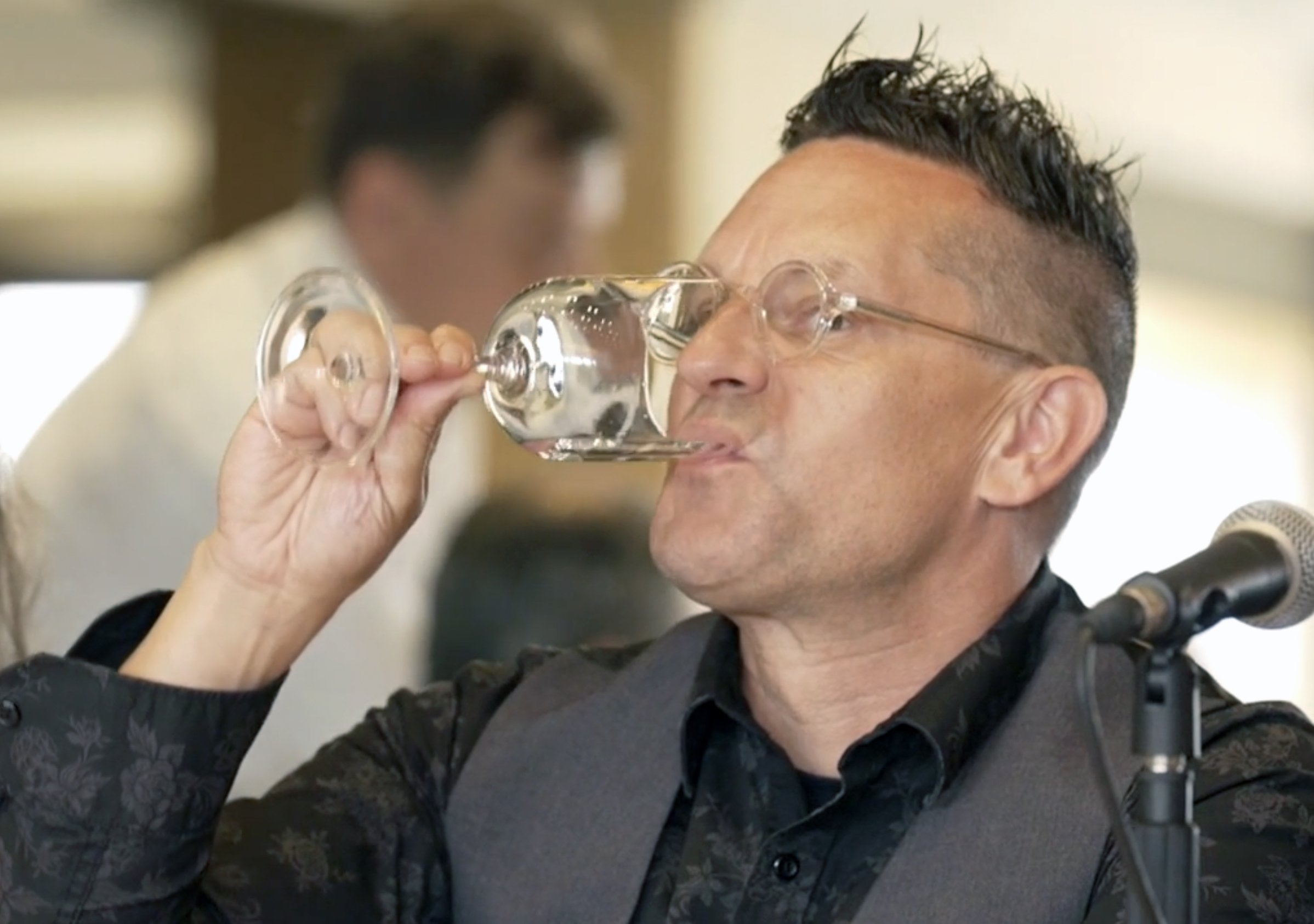Water sommeliers treat H20 like a fine wine at annual Fine Water Summit
Such events can also highlight the inequities of the life-sustaining resource.
Does water have a distinct taste? The answer is a resounding yes – that is, if you ask Martin Riese.
As the world's foremost water sommelier, Riese makes a living out of tasting water from around the world with the passion of a wine expert luxuriating in a glass of top-shelf Pinot noir.
“I’m almost, like, chewing the water,” Riese said while sipping from a stemmed wine glass. “I’m chewing the water. I’m putting a lot of my – I’m moving the water through all my whole palate, because my tongue has different taste palates. And I want that the water goes everywhere that my tongue now can detect taste. Then I’m adding oxygen.”

Riese joined some of the world’s top water tasters in April at the Fine Water Summit in Athens, Greece, where they judged close to 100 different varieties of water, with categories ranging from low-mineral still to high-mineral sparkling.
And while it all might seem slightly ridiculous, these experts argue that there’s more to water than meets the eye.
“Water can be fruity, easy, approachable to, ‘Oh my god, what’s happening in my glass?’” Riese said. For example, a type of natural sparkling water from Spain comes out of the source with bubbles in it.
Outside of carbonation, it’s the minerals, varying from location to location, that give the water its unique flavor. Many of the waters featured at the Fine Water Summit have detailed labels listing their mineral profiles.
“What we're really trying to tell people is that water is not just water. Water is a natural product that comes from a real place. Water has terroir like wine, and water can hold experiences, and water gives you wellness,” said Michael Mascha, founder of Fine Water Society, the organization that certifies water sommeliers and hosts the yearly summit.

Water sommeliers can even pair a water with a meal. Floral Tasmanian rainwater, for instance, might go well with your dessert. Carlos Crespo Lorenzo helped create the world’s largest water menu for his family’s restaurant in Spain, offering 150 waters from 33 countries. Some of the waters he sells range from $8 to more than $17,000 a bottle.
The sommeliers say they have noticed a shift in the way people now think about water.
“People realize how important water is, and as we raise the awareness of water, more people are aware of what is being a perfect beverage to have all these kinds of experiences and to now pay attention and to want to be a part of that,” Mascha said.
But they're also mindful of how this might all look – fancy imported waters from glaciers and rainwater from remote locations, shipped to Greece for a taste test. With close to 2 billion people living without access to clean drinking water worldwide, events like these can also highlight the inequities of our planet’s most precious resource.
“So for me, it's more about starting a conversation about water in general. So I actually love the passion of people who are saying, ‘Martin, this is ridiculous. You're drinking different waters and then other people don't even have access to it.’ Great, you talk about it. That's exactly what we want. That's exactly what we want. That's exactly my point. Let's talk about it. Let's see what's happening on this planet,” Riese said.



